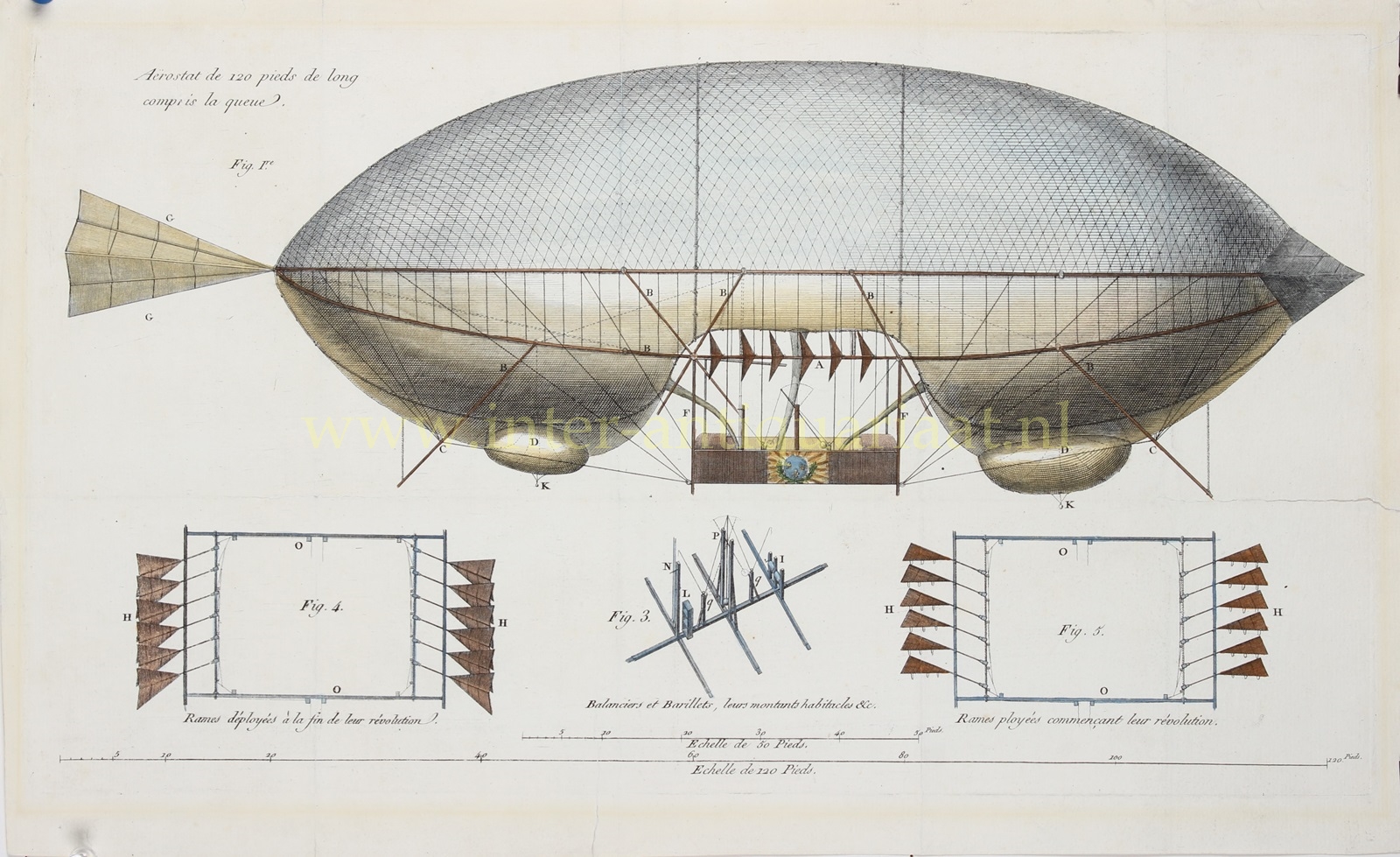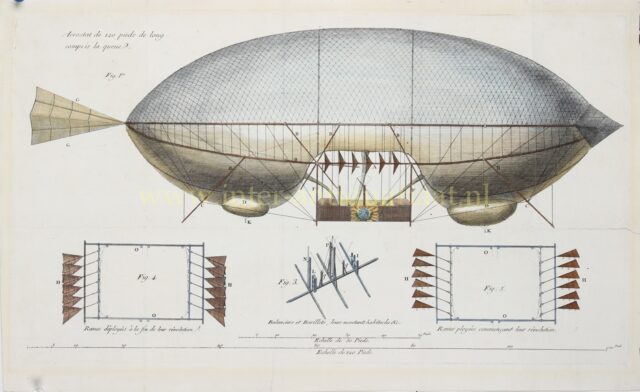Luchtschip – François Maradan, 1789
18TH CENTURY DIRIGIBLE BALLOON “Aérostat de 120 pieds de long compris la queue” [airship 120 feet long, including the tail],…
Lees verder€450
18TH CENTURY DIRIGIBLE BALLOON
“Aérostat de 120 pieds de long compris la queue” [airship 120 feet long, including the tail], copper engraving published by François Maradan in 1789 as part of Baron Le Scott’s “Aérostat dirigeable a volonté” [airship steerable at will]. Coloured by a later hand. Size: (platemark) 26,5 x 46 cm.
The invention of the balloon struck the men and women of the late 18th century like a thunderbolt. Enormous crowds gathered in Paris to watch one balloon after another rise above the city rooftops, carrying the first human beings into the air in the closing months of 1783. The excitement quickly spread to other European cities where the first generation of aeronauts demonstrated the wonder of flight. Everywhere the reaction was the same. In an age when men and women could fly, what other wonders might they achieve.
From the first gas balloons in 1783, the idea of a dirigible or airship began to take shape. It became clear that the major flaw of these balloons lay in their inability to be steered. Under the guidance of the Robert brothers, the shape of the balloon was elongated. As early as 1783, the scientist General Jean-Baptiste Meusnier conceived the steering mechanisms, which would form the basis of modern aeronautics.
In an effort to share the excitement with those who could not attend an ascent, to let people know what the aerial craft looked like, and to introduce the brave men and women who were taking to the sky, artists, engravers and publishers printed images and books to show the world, ranging from the meticulously accurate to the wildly fanciful.
Price: Euro 450,-


